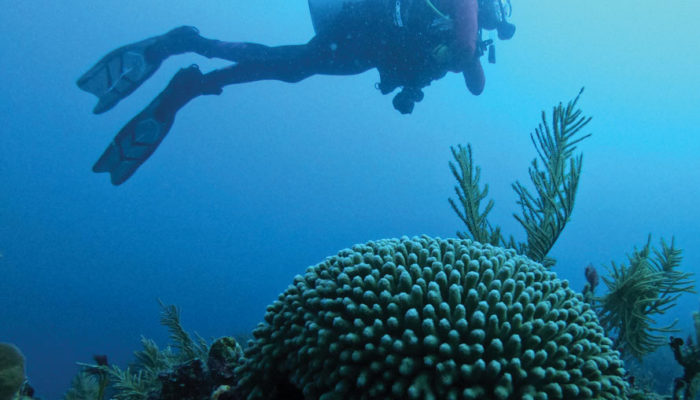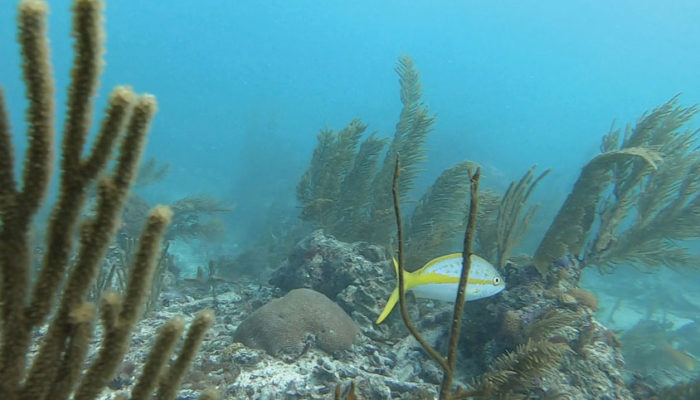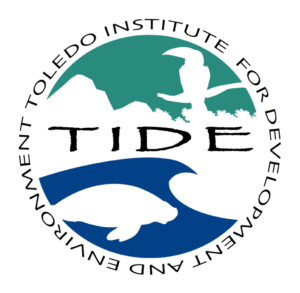BIOPAMA
Improving the knowledge, monitoring and protection of Mesoamerican reef's fish, spawning aggregations and replenishment zones

| Type of priority area | Marine Protected Area | Key Biodiversity Area | Transboundary Areas |
| Primary objective | Management Effectiveness | Livelihoods | Governance |
| Target groups | Local Communities | Indigenous people | Farmers/Fishermen |
| Main activity focus | Management Plan | Legal Framework/Regulation | Co-management |
 Duration: 01.07.2020 – 30.06.2023
Duration: 01.07.2020 – 30.06.2023
WDPA ID: 342407, 220100, 220039
Type of grant & budget: Medium Grant | 761,753€ BIOPAMA RRIS Link: https://rris.biopama.org/pa/220100 https://rris.biopama.org/pa/342407 https://rris.biopama.org/pa/220039
Location: Belize, Caribbean
Protected & Conserved Areas: 1-mile San Antonio Rd. Toledo, Belize C.A.  Project Lead: Toledo Institute for Development and Environment (TIDE)
Project Lead: Toledo Institute for Development and Environment (TIDE)
Project Partners : Southern Environmental Association and Healthy Reefs for Healthy People
Description of the project : This project will address the following objectives based on the protected areas associated with the project:
1.To obtain legal recognition and management of Cayman Crown in Belize, a recently discovered fish spawning aggregation site by 2022.
2.To promote participatory monitoring and protection of 3 sentinel spawning aggregation sites in Belize as an integral part of the Mesoamerican Reef spawning aggregation network.
3.To gain support for project activities through communication and income diversification programs.
Diagnostic Tools Used: Belize Management Effectiveness Evaluation (2009), Management Effectiveness Tracking Tool (2011) and Belize National Protected Areas Systems Plan The BIOPAMA Action Component Objectives Addressed: ✓Enhance the management and governance of priority areas by addressing existing limitations (strengthening on-site infrastructure/ equipment for patrolling, poaching control, developing capacity of staff); ✓Strengthen the legal framework required to achieve effective biodiversity conservation; ✓Support local communities’ initiatives aiming to enhance the livelihoods of local people whilst effectively contributing to protected areas management.
Priority Need Addressed: Improved management effectiveness and governance indices at the end of action by 2023.
The change the project implementation will bring for the protected areas: The implementation of this project will bring significant positive change for the protected areas (Gladden Spit Silk Cayes Marine Reserve, Sapodilla Cayes Marine Reserve including the Cayman Crown Site and the Port Honduras Marine Reserve) associated with the project. Foremost, by providing information on spawning aggregation sites and engaging local actors for their protection: Policies will be put in place, in countries where this is necessary, for the full protection of spawning aggregation sites or temporary protection during spawning seasons; the law will be applied during spawning periods in spawning sites, not only in already protected areas but also in new areas proposed at Cayman Crown; local fishermen will adhere to no-fishing guidelines according to the rules set out in the spawning aggregation sites; and the number of fish documented in these areas during the spawning period will be stable or increase for all species. The project Improving the knowledge, monitoring and protection of Mesoamerican reef’s fish, spawning aggregations and replenishment zones is financed by the European Union and the Organisation of African, Caribbean and Pacific States through the Biodiversity and Protected Areas Management (BIOPAMA) Programme. BIOPAMA assists the African, Caribbean and Pacific countries to address their priorities for improved management and governance of biodiversity and natural resources. BIOPAMA provides a variety of tools, services and funding to conservation actors in the African, Caribbean and Pacific (ACP) countries. The BIOPAMA grant-making facility is managed by IUCN (International Union for Conservation of Nature) and supports projects on the ground to strengthen the management and governance of protected and conserved areas, with a total budget of 21 million Euros.
This project is financed by the European Union and the Organisation of African, Caribbean and Pacific States through the BIOPAMA Programme. The contents of this material are the sole responsibility of the Toledo Institute for Development and Environment (TIDE) and can under no circumstances be regarded as reflecting the position of the EU nor of the OACPS. Photo credits: (TIDE)
